"von Asgard" Working Dog Kennel
Breeding Quality European Working Dogs for over 35 years
|
 |
| Linda M. Werlein Von Asgard's Owner/Founder since 1979 |
|
| |
The Werlein Family Coat-Of-Arms originated in Bayern (Baveria) over 800 years ago. Freistaat Bayern (Freestate of Bavaria) is now located in southeastern Germany.
|
Since 1979, “von Asgard” Working Dog Kennel has successfully imported, bred, trained & titled/certified the finest European Working Dogs. For the past 30 years, our intent was NOT to just breed very good dogs, and NOT to just breed exceptional European Show Quality dogs; but . . . to ONLY line-breed on well-proven, stable dogs from the strongest European Working Dog Kennels. Over the years, the number of dog breeds that we bred has grown from two breeds to, now, four breeds . . . see below.
|
|
Through her "von Asgard" Working Dog Kennel,
Linda Werlein breeds the following
European working breeds:
1.) European - Doberman Pinschers (Dobermann) FCI / AKC
2.) European - Giant Schnauzers (Riesenschnauzer) FCI / AKC
3.) European - Belgian Shepherds (Mechelse Herder) KNPV Bloodlines
4.) European - Dutch Shepherds (Hollandse Herder) KNPV Bloodlines
|
^^^^^^^^^^^^^^^^^^^^^^^^^^^^^^^^^^^^^^^^^^^^^^^^
|
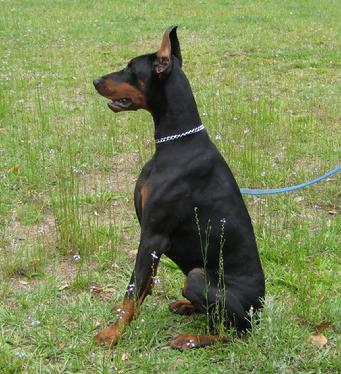 |
| Panzer von Asgard - Dobermann Male (Black & Rust) |
|
|
 |
| Brunhild von Asgard - Dobermann Female (Black & Rust) |
|
|
Doberman Pinscher (In German: Dobermann)
See Photos Above
The Dobermann, or Doberman, or Doberman Pinscher, is a medium-large, powerful breed of dog. It was originally developed in the late 1800s by Karl Friedrich Louis Dobermann, a tax collector from Apolda, Germany. The muzzle is long, and so affords the leverage for an extremely strong bite. The Dobermann is noted for its very noble appearance. Ideally, they have an even and graceful gait. Traditionally, the ears are cropped, and the tail is docked.
Early on, they were called "Gendarme's Dogs" (Police Dogs) by the French. The Dobermann was used in WW I and WW II as a War Dog by the German Military. The US Marine Corps Dobermanns were called "Devil Dogs" in WW II after the Dobermann was selected as the US Marine Military Work Dog in the Pacific.
|
^^^^^^^^^^^^^^^^^^^^^^^^^^^^^^^^^^^^^^^^^^^^^^^^
|
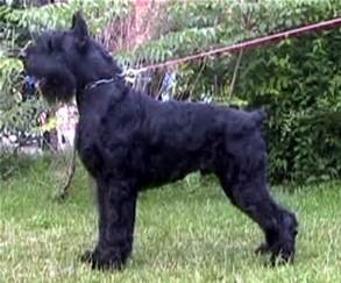 |
| Goliath von Asgard - Giant Schnauzer Male (Black) |
|
|
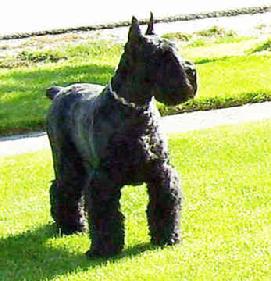 |
| Nixi von Asgard - Giant Schnauzer Female (Pepper & Salt) |
|
|
Giant Schnauzer (In German: Riesenschnauzer)
See Photos Above
The Giant Schnauzer is a working breed of dog developed in the 17th century in the country of Bayern (Baveria - now a Freestate in the Federal Republic of Germany). Originally bred to assist on farms by driving livestock to market and guarding the farmer's property, the breed eventually moved into the city, where it worked guarding breweries, butchers' shops, stockyards and factories. The Reisenschnauzer (Giant Schnauzer) was unknown outside its native country of Bayern (Bavaria) until it became popular as a military dog during World War I and World War II.
During the years around the turn of the century, both smooth German Pinscher and course-haired Schnauzer pups appeared in the same litters. The German Pinscher Schnauzer Club initiated a policy requiring proof of three generations of pure coarse-haired Schnauzer coats for registration. This quickly helped set type and made them a distinct breed from the German Pinscher. These Schnauzers were given the name Standard Schnauzer. These Standard Schnauzers were crossed with the black Great Dane and the Bouvier des Flanders to form the Giant Schnauzer breed. The Schnauzer name derived from the German word "Schnauze," which means "muzzle." The Giant Schnauzer is called the “Riesenschnauzer” in Germany, which means "the giant." The Giant Schnauzer was used as a cattle driving dog in Bavaria, and as a guard dog by the police and military and excels at Schutzhund/IPO.
|
^^^^^^^^^^^^^^^^^^^^^^^^^^^^^^^^^^^^^^^^^^^^^^^
|
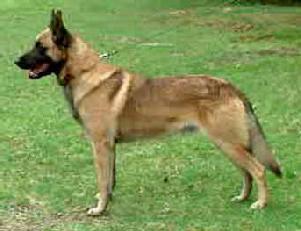 |
| Rex - Belgian (Malinois) Shepherd |
|
|
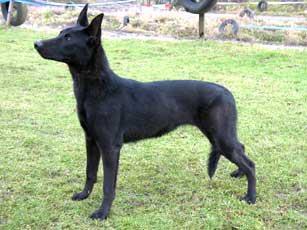 |
| Lucy - Black Belgian (Malinois) Shepherd |
|
|
Belgian (Malinois) Shepherd (In Dutch: Mechelse Herder)
See Photos Above
In Belgium, Germany, the Netherlands and other European countries, as well as in the United States, Canada, Australia and Hong Kong, the Belgian Malinois is bred primarily as a working dog for personal protection, detection, police work, search and rescue, and also for sport work like French Ring, Belgian Ring, Mondio Ring and Schutzhund/IPO. The United States Secret Service and Royal Australian Air force use the Belgian Malinois Shepherd along with other working lines such as Dutch Shepherd, and also German Shepherd. In the United States Armed Forces, Belgian Shepherds & Dutch Shepherds lead the way, but close behind follows the German Shepherd.
In India, The ITBP and National Security Guard (NSG) commando unit have inducted Malinois breed into its K-9 unit. Rocket, a Belgian Malinois raised in India's National Security Guard's K-9 unit, as an expert assault and sniffer dog, was recommended for gallantry award in 2016, for detecting fidayeen presence in Pathankot airbase attack. During the operation he received burn injuries on his paws and forehead, but after treatment for weeks he was back on duty.
Malinois dogs are used by the Oketz, the K-9 unit of the Isreal Defense Forces. Malinois are a suitable size to be picked up by their handlers when required, while still being large enough to control human aggressors. Compared to previously used breeds (such as German Shepherds and Rottweilers), the shorter coats and fair and neutral colors of Malinois are better adapted to natural conditions and less prone to induce heatstroke.
United States Navy SEALs used a Belgian Malinois War Dog named Cairo in Operation Neptune Spear, in which Osama bin Laden was killed.
On 18 November 2015, Diesel, a seven-year-old Malinois RAID Assault Dog employed by the French Police, was killed in a shootout with suspected terrorists in the Saint-Denis area of Paris, while searching for suspects involved in the November 15 Paris Attacks. The police dog was given a funeral with Full Honors.
|
^^^^^^^^^^^^^^^^^^^^^^^^^^^^^^^^^^^^^^^^^^^^^^^^^^^
|
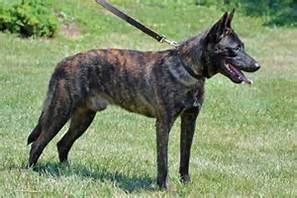 |
| "Ralf" - Dutch Shepherd Male (Gold Brindel) |
|
|
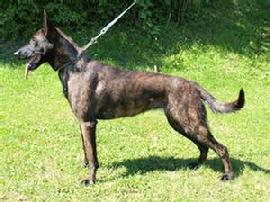 |
| "Dinah" - Dutch Shepherd Female (Gold Brindel) |
|
|
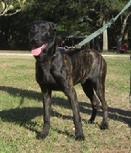 |
| Garm von Asgard - A young Dutch Shepherd male with KNPV bloodlines. |
|
|
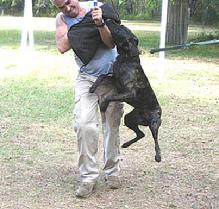 |
| Garm has been started in KNPV-style training at Von Asgard K-9 Center. |
|
|
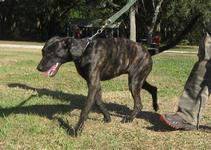 |
| Garm von Asgard - will be another Dutch Shepherd stud at Von Asgard when he has proved his working character. |
|
|
Below is a video of the upcoming litter that our new Dutch Shepherd female pup is coming from.
|
Dutch Shepherd Dog (In Dutch: Hollandse Herder)
See Photos Above
The Dutch Shepherd is a herding dog of Dutch origin. They were used by shepherds and farmers who needed a very versatile dog, one with few demands, and a dog that was able to adapt to a harsh and meager existence. The Dutch Shepherd Dog's temperament is affectionate, alert, loyal, obedient, reliable and very trainable. All Dutch Shepherds have "Brindle" coats. They are very much like the Belgian Malinois.
Dutch Shepherds are among the most competent of all shepherd dogs at such tasks as livestock guarding, guard work, herding, tracking, obedience competition, agility, and companionship. The Dutch Shepherd is an enthusiastic worker, this affectionate dog excells as a family protector. Recently, it has gained much praise worldwide as an excellent Police K-9 and exceptional Military Work Dog.
A brief history of the Dutch Shepherd Dog.
The “Dutch Shepherd” or “Hollandse Herder” as it is known in it’s homeland, the Netherlands , is an FCI registered breed. The official breed club (Nederlandse Herdershonden Club’) was founded in the Netherlands in 1898, and similar to the Belgian Shepherd, the Dutch Shepherd comes in different varieties. The three varieties are - short coat, long coat and rough coat. The short coat and long coats come in either gold or silver brindle while the rough coat can come in gold and silver brindle as well as salt and pepper.
In the late 1800’s there wasn’t as much to distinguish between the Belgian, German and Dutch Shepherds as there is today. They were all shepherd dogs and while they were different in a lot of respects, they were also cross-bred with each other on occasions. Some of the early German Shepherd dogs were brindle in colour and after a few years into this breeds development the brindle colour was taken out of the gene pool.
It wasn’t until the 1890’s that these three breeds went their separate ways and became breeds of their own right, and hence, the Dutch Shepherd became the brindle shepherd dog of Holland.
From 1898 to 1914 there were a lot of changes in the breed standard of the Dutch Shepherd, and while things settled down after this point there were still a few changes that would happen. After the first and second world wars the numbers and condition of the Dutch Shepherds was under threat (as were most dogs) so they again out crossed to the Belgium Shepherd dog to bring in new blood. Around the time of the First World War there were also some crosses to the German Shepherds but the results were disastrous, so any future crosses were only made to the Belgium Shepherd. And so after over 100 years of development and refinement we have today the modern Dutch Shepherd Dog.
While the Dutch Shepherd is a breed in its own right there are now generally considered to be two different “types” of Dutch Shepherd available.
The first is the FCI registered Dutch Shepherd. These dogs are bred to FCI standards with official pedigrees and generally compete in conformation shows and or are trained in various dog sports and working pursuits such as IPO, Agility and SAR. These dogs, like most pedigree dogs, are in the main, bred more for conformation showing as per FCI Standards, with only a few breeders concentrating on producing these dogs specifically for working pursuits. The registered Dutch Shepherd is not a large breed in terms of numbers with approximately 4,000 dogs currently registered with the FCI.
The second type of Dutch Shepherd is that most commonly found in the Royal Dutch Police Dog or “Koninklijke Nederlandse Politiehond Vereniging” (KNPV) training program. Here in it’s homeland the Dutch Shepherd is one of the mainstay breeds of the KNPV, along with the ever-popular Malinois. In fact a
Dutch Shepherd called “Fritz” won an international Police dog competition in Germany back in 1908.
It is worth noting that two of three founding members of the KNPV were also members in the Dutch Shepherd Club.
Within the KNPV program, the Dutch Shepherd has survived without the influence and pressures of the conformation circles and has not been restricted by the need for an official pedigree. The Dutch Shepherd of the KNPV program is, and always has been, bred to be a working police dog. Even within the KNPV program, compared to the Malinois, the Dutch Shepherd is only relatively small in population yet continues to maintain a working police dog heritage that few breeds can match. Since the year 2000 the Dutch Shepherd has been winning the national KNPV championships on a regular basis. The 2001 PH1, 2002 PH2, 2003 PH2, 2006 PH1 titles were won by Dutch Shepherds, not to mention all the 2nd and 3rd places gained by other high quality Dutch Shepherds.
Unlike the dog sport programs such as IPO, Schutzhund, and even French Ring, the KNPV has no requirement for dogs to hold an FCI or official pedigree. In fact, around about 90% of the dogs titled in the KNPV program do not have FCI or official pedigrees. The KNPV program believes that official pedigrees are not required to produce quality police dogs - and the continuing success of the program has proven this to be true. Although a little controversial, most would have to agree that generally most dogs that successfully obtained a KNPV title would be capable of obtaining IPO and Schutzhund titles, where as, the same could not be said of as many Schutzhund or IPO titled dogs being capable of achieving KNPV Police Dog Titles.
The difference with the unregistered Dutch Shepherds found in the KNPV program is that they have a strong influence of Malinois blood in them. Without the restriction of official registration or pedigree, the definition of whether a dog is a Malinois or a Dutch Shepherd, primarily comes down to appearance. When a Malinois is bred to a Dutch Shepherd some of the pups will be born with a Fawn coat and will be known as a Malinois, while others will be born with a brindle coat and will be known as a Dutch Shepherd. One legendry KNPV Dutch Shepherd was Arras Pegge. While Arras had a Dutch Shepherd for a mother his father was a Malinois. This simple classification process has allowed the unregistered Dutch Shepherd (and unregistered Malinois for that matter) to develop and maintain a large gene pool for breeding. Although the unregistered Dutch Shepherd can carry a good deal of Malinois blood, people often comment that they still maintain the often desirable traits of the Dutch Shepherd, that is, a highly driven, sometimes stubborn dog with more calmness than a Malinois. They are also often described as “a Malinois with an off switch!”
In general, the un-registered KNPV Dutch Shepherd is a larger dog (males can reach over 70 cms at the shoulder and weigh up to 55 kgs, while females can reach over 65 cms and weigh up to 40 kgs) with larger bones and head size than the FCI registered dogs. They also commonly have a far more highly and widely regarded working character than the Dutch Shepherds bred solely to FCI standards.
Of interest is the fact that in some European countries such as Belgium, the official stud books have not been closed for the Dutch Shepherd and a number of quality unregistered Dutch Shepherds from the KNPV program have entered the FCI database. One such dog is the 2002 National KNPV PH2 Champion “Nico Van Neerland”. These dogs will add to the working qualities of the registered Dutch Shepherds in the future.
The search for quality working dogs for police, military and high level competition around the world has led to a large demand for the Dutch Shepherd and as such this breed will become a far more common site in the different service departments around the world, just as it has in it’s homeland of Holland.
|
^^^^^^^^^^^^^^^^^^^^^^^^^^^^^^^^^^^^^^^^^^^^^^^^^^^^^^^^^^^^^^^^^^^^^^^^^^^^^^^^
|
Call Linda to discuss a quality
European pup for your family:
800-797-2954
|
|